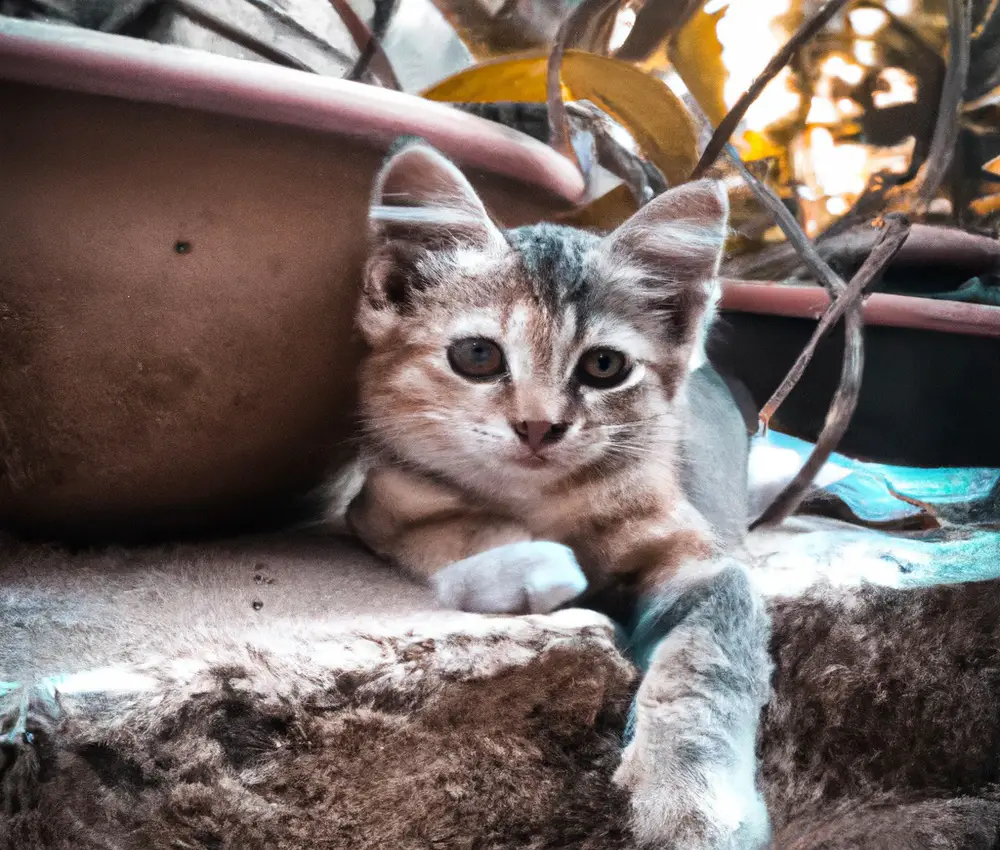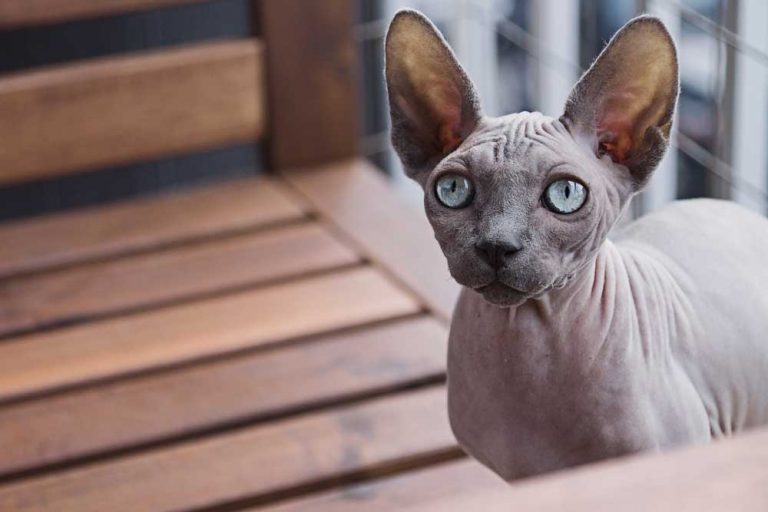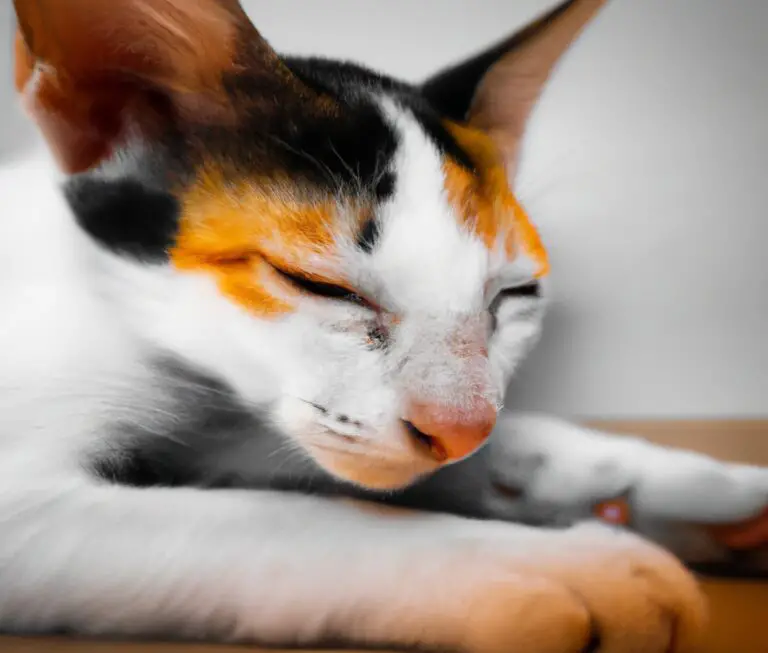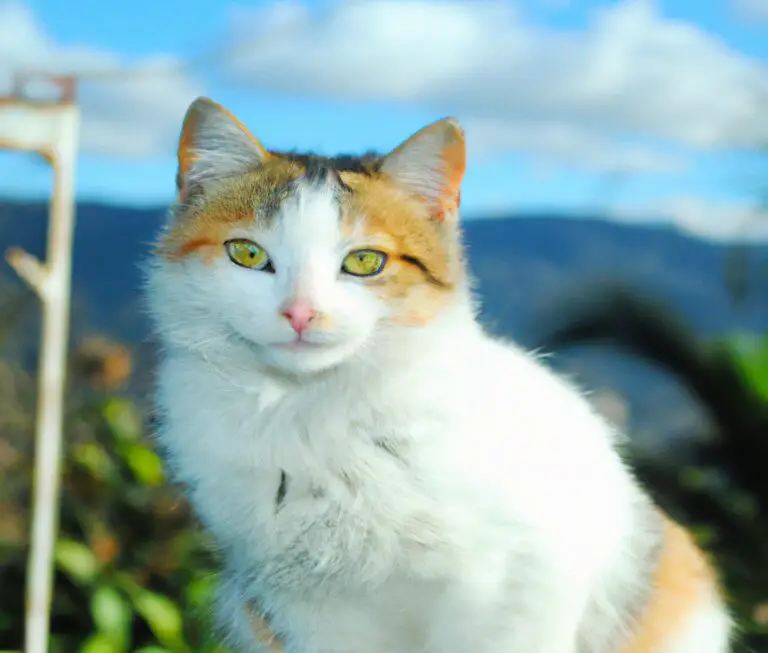Can Cats And Ferrets Share a Litter Box?
Key Takeaways:
- Cats and ferrets typically do not share a litter box due to different bathroom habits and hygiene needs.
- Cats have a strong natural instinct to bury their waste, while ferrets have a tendency to play and dig in litter, potentially causing hygiene issues.
- Sharing a litter box may increase the risk of territorial disputes or stress between cats and ferrets, leading to potential behavioral problems.
- It is generally recommended to provide separate litter boxes for cats and ferrets to ensure their individual comfort, hygiene, and well-being.
Have you ever wondered if cats and ferrets can peacefully coexist and even share a litter box?
It’s not a concept that immediately comes to mind, considering their differences in behavior and instincts.
Cats are known for their territorial nature, while ferrets prefer separate spaces.
However, with the right approach and gradual introduction, it is indeed possible for cats and ferrets to share a litter box harmoniously.
In this article, we will explore the mechanics of sharing a litter box, the steps to successfully introduce a shared litter box, and answer some frequently asked questions about this unique living arrangement.
So, let’s dive in and discover how cats and ferrets can make it work!
| Cats | Ferrets |
|---|---|
| Yes | No |
| Cats can share a litter box with other cats. | Ferrets should not share a litter box with cats. |
| Cat litter should be unscented and clumping. | Each ferret should have its own litter box. |
| Litter box should be large and easily accessible. | Litter should be changed often to minimize odor. |
Understanding cats and ferrets
Cats and ferrets have different behaviors and instincts due to their respective evolutionary backgrounds.
Differences in behavior and instincts
Cats and ferrets have distinct differences in behavior and instincts.
Here are a few key points to consider:
- Hunting instincts: Cats are natural hunters, and even well-fed domestic cats may display stalking and pouncing behaviors. On the other hand, ferrets have a strong prey drive and love to chase small animals.
- Social behavior: Cats are more independent and usually prefer solitary living, although they can still form close bonds with their human caregivers. Ferrets, on the other hand, are highly social animals and thrive on interaction and playtime with other ferrets or humans.
- Litter box habits: Cats are known for their instinct to bury their waste. They are meticulous about cleanliness and may be disturbed by a dirty litter box. Ferrets, on the other hand, tend to have specific spots where they eliminate, and may not be as concerned about keeping their area clean.
- Climbing and jumping: Cats are agile climbers and skilled jumpers, thanks to their retractable claws and flexible bodies. Ferrets, while also capable of climbing, tend to have a preference for digging and exploring underground tunnels.
Understanding these differences in behavior and instincts can help cat and ferret owners provide suitable environments and fulfill their pets’ needs.
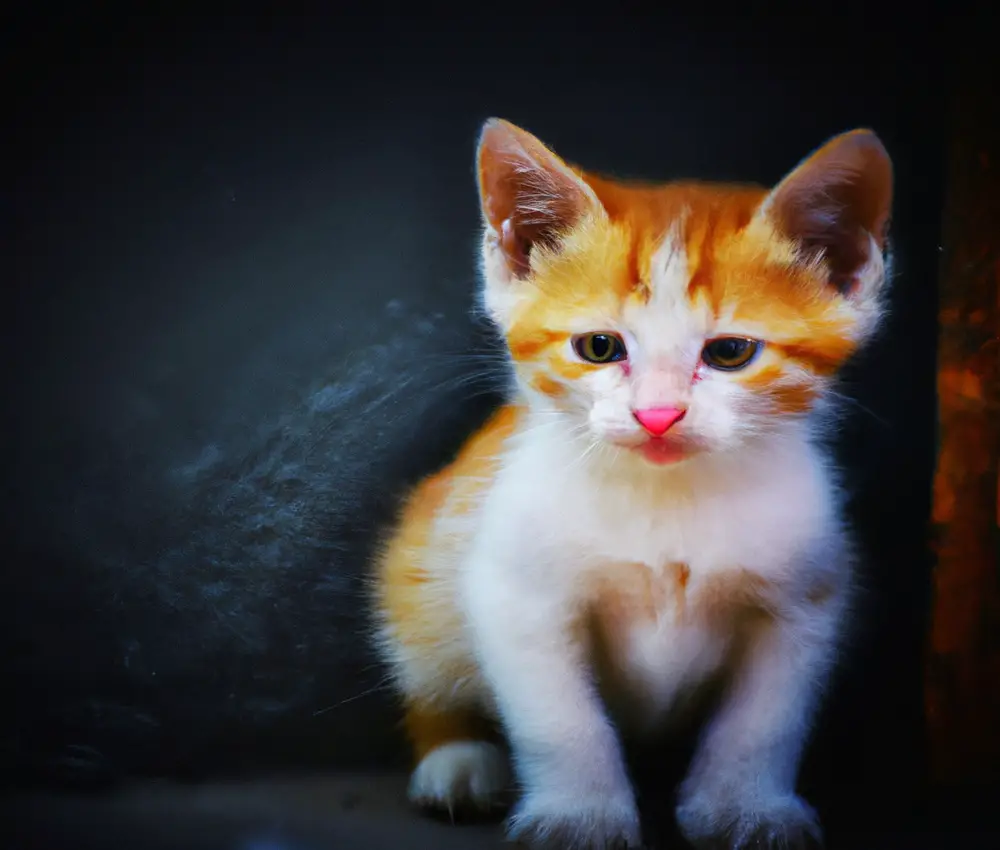
Cats and their territorial nature
Cats are known for their strong territorial nature.
They have a natural instinct to establish and defend their territory.
This behavior is a result of their evolutionary past as solitary hunters.
Cats mark their territory by scent marking, scratching, and displaying territorial aggression.
Understanding a cat’s territorial nature is important for their well-being.
Providing them with enough space, environmental enrichment, and vertical spaces can help satisfy their territorial instincts and reduce stress.
Introducing a new cat to their territory slowly and gradually can also help minimize territorial conflicts.
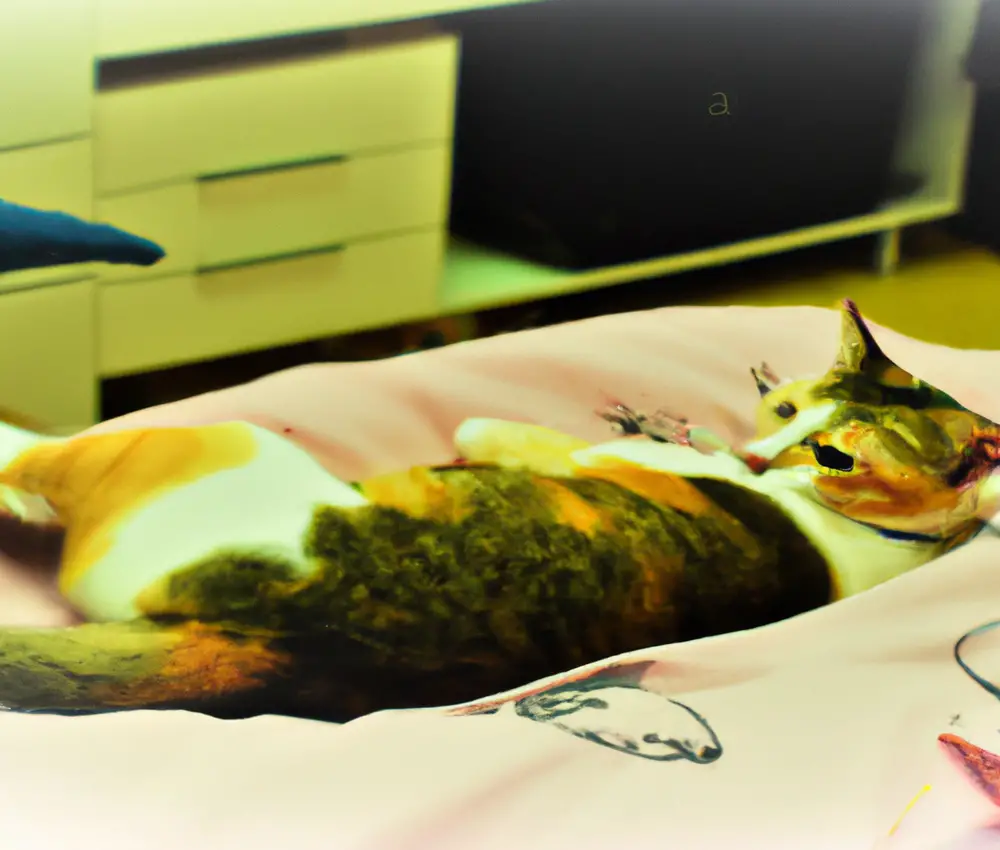
Ferrets and their preference for separate spaces
Ferrets are naturally territorial animals and prefer to have their own separate spaces.
It is important to provide each ferret with their own designated area, such as a cage or room, where they can retreat and have privacy.
This helps reduce stress and potential conflicts between ferrets.
Additionally, having individual spaces allows ferrets to establish their own scent markings and territory, which is important for their overall well-being.
Providing separate spaces for ferrets is a key aspect of their care and ensures a harmonious living environment.
Compatibility between cats and ferrets
Cats and ferrets can coexist, but their compatibility depends on several factors. Each cat and ferret is unique, so their personalities play a key role in determining if they’ll get along.
Slow introductions and supervised interactions are essential.
Provide separate spaces for each pet, including separate litter boxes for hygiene. Patience, understanding, and careful observation are crucial when introducing these two animals.
Be aware that some cats may have a strong prey drive towards ferrets, so monitoring their interactions is necessary.
Factors that influence their relationship
When considering the relationship between cats and ferrets, several factors can influence their interactions. These factors include:
- Socialization: How well a cat and ferret have been socialized with other animals, including each other, can greatly impact their relationship. Proper introduction and gradual exposure to each other’s presence can help build a positive dynamic.
- Temperament: The individual personalities of the cat and ferret play a role in how well they get along. Some cats may be more tolerant and accepting of ferrets, while others may be more territorial or aggressive.
- Size and Strength: Cats are generally larger and more agile than ferrets. The size and strength difference can impact how they interact, with the cat potentially overpowering the ferret or becoming too rough during play.
- Prey Drive: Cats have an innate prey drive, and some may see ferrets as potential prey. This can lead to chasing or aggressive behavior. It is important to monitor interactions and provide appropriate outlets for the cat’s hunting instincts.
- Training and Supervision: Training both the cat and ferret, using positive reinforcement techniques, can help establish boundaries and ensure a harmonious relationship. Supervision during their interactions is essential to prevent any potential conflicts.
By considering these factors and providing a safe and controlled environment, cats and ferrets can potentially coexist and even develop a positive relationship. Observing their behavior and making adjustments as needed will go a long way in fostering a peaceful and happy dynamic between them.
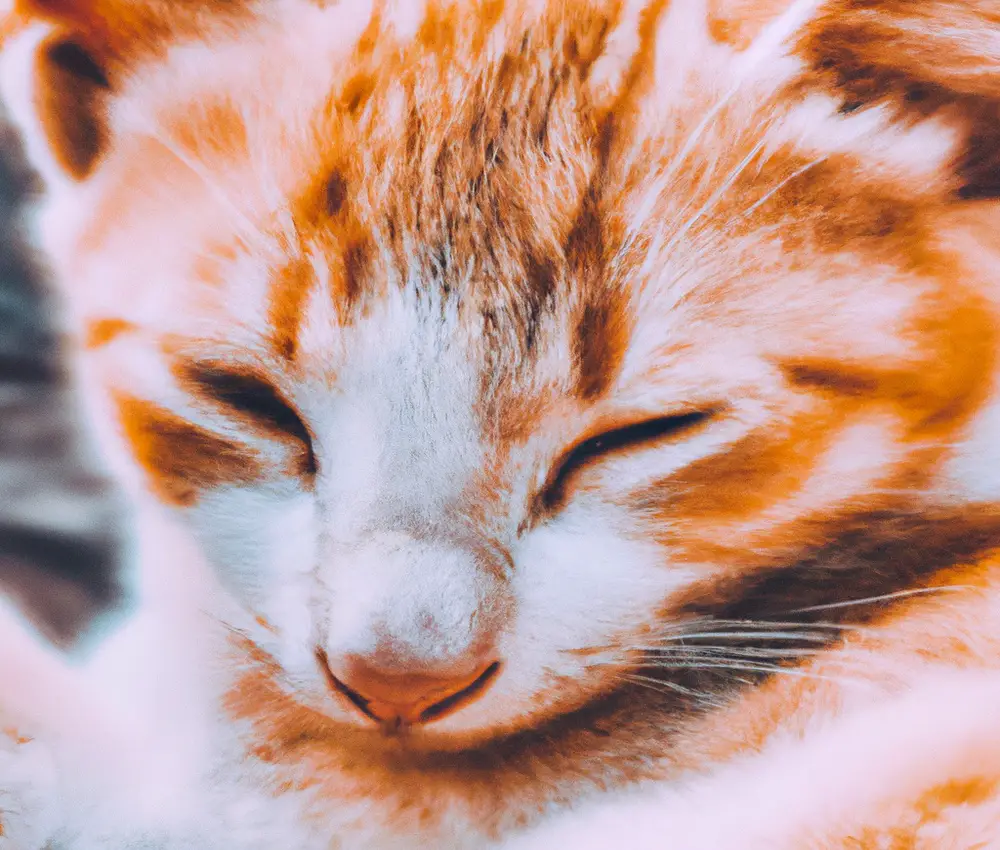
Successful examples of cats and ferrets cohabitating
Successful examples of cats and ferrets cohabitating are not uncommon. With proper introductions and gradual integration, cats and ferrets can learn to peacefully coexist.
It is important to create separate spaces for each pet, allowing them to have their own territory.
Implementing positive reinforcement and supervision during interactions can also help build trust between them. Ideally, cats and ferrets should be supervised when together, especially during the initial stages of their cohabitation.
With patience and proper management, cats and ferrets can form a harmonious household.
The mechanics of sharing a litter box
When it comes to sharing a litter box, consider hygiene, health risks, litter box size and accessibility, space for both animals, and the right type of litter box for cats and ferrets.
Importance of proper litter box hygiene
Proper litter box hygiene is crucial for the health and wellbeing of your cat and ferret. Here’s why it’s important:
- Preventing the spread of diseases: Regularly cleaning and disinfecting the litter box helps decrease the risk of bacterial or viral infections that can be transmitted between animals.
- Promoting good litter box habits: Maintaining a clean litter box encourages your pets to use it consistently, preventing accidents elsewhere in your home.
- Minimizing odor: Regular cleaning helps control unpleasant odors associated with waste, ensuring a fresh and hygienic environment for both your pets and your home.
- Preventing urinary issues: A dirty litter box can contribute to urinary tract problems in cats and ferrets. Cleaning the litter box regularly can help prevent these issues and promote better urinary health.
By prioritizing proper litter box hygiene, you can create a clean and hygienic space for your pets, reducing the risk of health problems and ensuring a happier home for all.
Reducing the risk of litter box-related health issues
Reducing the risk of litter box-related health issues is essential.
Here are some tips to ensure your cat and ferret stay healthy:
- Maintain cleanliness: Scoop the litter box daily and change the litter regularly. This helps prevent the buildup of bacteria and odors.
- Provide separate boxes: Cats and ferrets have different bathroom behaviors. Giving them separate litter boxes reduces the risk of territorial issues and cross-contamination.
- Choose the right litter: Some litters can be harmful if ingested. Opt for clumping or natural litter that is safe for both cats and ferrets.
- Consider litter box placement: Place the boxes in quiet, easily accessible areas. This encourages regular use and reduces stress.
- Monitor your pets’ behavior: Look out for any changes in bathroom habits or signs of discomfort. Consult a veterinarian if you notice any concerns.
Litter box size and accessibility
When it comes to the size of a litter box and its accessibility for your cats and ferrets, there are a few things to consider. First, make sure the litter box is large enough for both animals to comfortably use.
Cats and ferrets have different sizes, so a larger litter box will help accommodate both of them.
Second, ensure that the sides of the litter box are low enough for the ferret to easily enter and exit. Ferrets are smaller and may have trouble with high sides, so choose a box with low sides or provide a ramp for easier access.
Third, consider placing the litter box in a location that is easily accessible to both cats and ferrets.
Avoid crowded spaces or areas where the animals may feel trapped or uncomfortable. By keeping these considerations in mind, you can create a litter box setup that is suitable for both your cats and ferrets.
Ensuring enough space for both animals
When it comes to ensuring enough space for both cats and ferrets to share a litter box, there are a few things to keep in mind.
Firstly, make sure the litter box is large enough to accommodate both animals comfortably.
A good rule of thumb is to have a box that is at least 1.5 times the length of your largest pet.
Secondly, consider having multiple litter boxes available in different areas of the house to avoid competition and provide options for both animals.
Lastly, regularly clean and maintain the litter box to ensure hygiene and prevent any issues.
Choosing the right type of litter box
Choosing the right type of litter box is essential for your cat and ferret’s comfort and hygiene.
Here are a few key factors to consider:
- Size: Ensure that the litter box is spacious enough for both your cat and ferret to move around comfortably.
- Accessibility: Opt for a litter box with low sides or a ramp, making it easy for your ferret to enter and exit.
- Separate compartments: Consider a litter box that has separate compartments for each pet, preventing any territorial disputes.
- Material: Choose a litter box made of durable and easy-to-clean material, such as plastic.
- Odor control: Look for a litter box with built-in odor control features or consider using odor-controlling litter.
Remember, every cat and ferret has unique preferences, so observing their behavior and making adjustments accordingly is crucial.
By choosing the right type of litter box, you can ensure a harmonious and clean environment for both your pets.
Considerations for a multi-animal household
Considerations for a multi-animal household:
- Space: Make sure your home has enough room to accommodate all the animals comfortably. Provide separate areas for each species to eat, sleep, and play.
- Socialization: Introduce the animals gradually and monitor their interactions. Some pets may not get along, so be prepared to provide separate spaces or supervised playtime.
- Feeding: Each species has specific dietary needs. Feed them separately to ensure they get the right food and prevent any potential food aggression.
- Litter boxes: Provide multiple litter boxes throughout the house, ensuring each animal has their own. Some animals may not want to share, which can lead to litter box issues.
- Veterinary care: Schedule regular check-ups and vaccinations for all pets. Some diseases can be transferred between species, so proper healthcare is essential.
- Training: Train each pet individually to follow house rules. Consistency and positive reinforcement will help them understand what behaviors are expected.
Remember, every animal is different, and it may take time for them to adjust to living together. Patience, careful supervision, and proper care will contribute to a harmonious multi-animal household.
Steps to successfully introduce a shared litter box
Here’s how to successfully introduce a shared litter box.
Gradual introduction process
The gradual introduction process is crucial when allowing cats and ferrets to share a litter box.
Start by placing separate litter boxes in the same room, allowing the animals to become familiar with each other’s scents.
Gradually move the boxes closer over time while monitoring their behavior.
Once they are comfortable, replace one of the litter boxes with a shared one.
Ensure the litter box is large enough for both animals and clean it regularly.
The gradual introduction process helps to prevent any potential conflicts that may arise between the animals.
Maintaining separate litter boxes initially
Maintaining separate litter boxes initially is important to ensure the comfort and hygiene of both cats and ferrets. It helps them establish their own territories and reduce the risk of any conflicts between them.
Here are some guidelines to consider:
- Provide each pet with their own designated litter box in separate areas of your home.
- Choose litter boxes that are suitable for the size and needs of each animal.
- Scoop the litter boxes daily to keep them clean and odor-free.
- Monitor your pets closely during the initial stages to ensure they are using their own litter boxes.
- If any issues arise, consult with a veterinarian or animal behaviorist for further guidance.
Remember, gradually introducing a shared litter box can be considered once both pets are comfortable with their separate boxes.
Slowly introducing the scents of the other animal
When introducing the scents of another animal to your cat or ferret, it’s important to take it slow. Start by swapping bedding or toys between the animals, allowing them to become familiar with each other’s scent.
You can also try rubbing a cloth on one animal and placing it near the other.
Gradually increase the interaction by supervised play sessions, keeping an eye on their body language. This gradual introduction will help them get accustomed to each other’s scent and reduce the chances of aggression or territorial behavior.
Allowing supervised interactions near the litter box
To allow supervised interactions near the litter box, there are a few important things to keep in mind.
First, make sure both your cat and ferret are comfortable and calm in each other’s presence.
Next, slowly introduce them to the area around the litter box while keeping a close eye on their behavior.
Provide separate litter boxes for each pet to avoid territorial issues.
Lastly, reward positive behavior and intervene if any aggression arises.
By carefully supervising these interactions, you can create a safe environment for both your cat and ferret.
Monitoring and adapting the process
Monitoring and adapting the process is essential when introducing a shared litter box for cats and ferrets.
Here are a few tips to help you with this crucial step:
- Observe behavior: Keep a close eye on how both animals interact with the litter box. Are they using it appropriately? Any signs of discomfort or aggression?
- Adjust as needed: If any issues arise, make necessary adjustments. This could include adding more litter boxes, changing the location, or using different types of litter.
- Provide separate spaces: Ensure that each animal has their own designated area for privacy. This helps prevent territorial disputes and promotes a peaceful coexistence.
- Clean regularly: Regularly clean the litter box and surrounding area to maintain hygiene. This will make it more appealing for both cats and ferrets to use the shared space.
Remember, each cat and ferret is unique, so be patient and flexible throughout the process.
Monitoring their behavior and making necessary adaptations will increase the likelihood of a successful shared litter box arrangement.
Identifying signs of stress or conflict
Identifying signs of stress or conflict in cats and ferrets can help you address any issues before they escalate. Look out for these signs:
- Aggressive behavior: Growling, hissing, or lunging can indicate stress or conflict.
- Body language: Flattened ears, raised fur, or a puffed-up tail could mean they’re feeling threatened or anxious.
- Avoidance: If your pets are actively avoiding each other or certain areas of the house, it may be a sign of tension.
- Changes in appetite or litter box habits: Stress can impact eating and toileting behaviors, so monitor any sudden changes.
- Excessive grooming or scratching: Over-grooming or excessive scratching can be a sign of stress or discomfort.
- Vocalization: Increased meowing, whining, or unusual sounds may indicate stress or conflict between your pets.
Adjusting the introduction process accordingly
Adjusting the introduction process accordingly is essential when it comes to introducing cats and ferrets to share a litter box.
Start by placing multiple litter boxes in separate areas to ensure accessibility for both pets.
Gradually move the litter boxes closer to each other over time.
Additionally, monitor their behavior closely during this adjustment period.
Providing individual spaces for both pets to eat, sleep, and play is crucial to maintaining peace and minimizing territorial issues.
Focus on creating a calm and stress-free environment for a successful introduction.
Frequently Asked Questions
Can I use the same type of litter for cats and ferrets?
Yes, you can use the same type of litter for cats and ferrets.
Both cats and ferrets are carnivores and have similar bathroom habits, so they prefer litters that are odor-absorbent and provide good clumping.
This helps to keep their surroundings clean and fresh.
Clay-based or natural litters made from materials like wood, paper, or corn are often suitable for both cats and ferrets.
It’s important to avoid litters that contain chemicals or artificial fragrances as they may be harmful to your pets.
Is it possible for cats and ferrets to share a litter box without any issues?
Cats and ferrets can share a litter box without issues, but it’s important to consider a few factors. Firstly, both cats and ferrets can transmit diseases through their waste, so keeping the litter box clean is crucial.
Secondly, cats may be territorial and may not like sharing their litter box with another animal.
So, providing separate litter boxes for each pet is advisable. Lastly, observe their behavior and make sure they are comfortable using the same box.
How can I prevent my cat from eating the ferret’s litter?
To prevent your cat from eating the ferret’s litter, there are a few simple steps you can take. Firstly, keep the litter boxes in separate areas, ideally in different rooms.
This will limit your cat’s access to the ferret’s litter.
Additionally, consider using covered litter boxes or placing a baby gate around the ferret’s litter box to deter your cat from getting in. Finally, make sure to regularly clean the litter boxes to discourage any unwanted behavior.
Are there any health risks associated with cats and ferrets sharing a litter box?
Cats and ferrets sharing a litter box can pose potential health risks.
Here’s why:
- Different litter box preferences: Cats and ferrets have different bathroom habits. Cats prefer digging and burying their waste, while ferrets tend to use their litter box as a personal toilet. This difference can lead to territorial issues and stress, causing health problems for both animals.
- Disease transmission: Cats can carry certain diseases, such as toxoplasmosis, that can be transmitted to ferrets through shared litter. Similarly, ferrets can pass on illnesses to cats. Regular cleaning and disinfection are crucial to prevent the spread of bacteria and parasites.
- Shared parasites: Both cats and ferrets can harbor parasites like fleas and ticks. If one animal has an infestation, it can easily spread to the other. Regular pest prevention measures are important to keep both pets safe.
To ensure the health and well-being of both your cat and ferret, it’s recommended to provide separate litter boxes and designate specific areas for each pet.
This will minimize the risk of disease transmission and promote a harmonious living environment.
Final Verdict
While cats and ferrets can potentially share a litter box, it is important to understand their unique behaviors and instincts before attempting to introduce them.
Proper litter box hygiene, size, and accessibility are crucial factors to consider for a successful cohabitation.
Gradual introduction, careful monitoring, and adjustment of the process are key steps to ensure a harmonious relationship between the two animals.
If difficulties arise, seeking professional guidance from a veterinarian or animal behaviorist is highly recommended.
With patience and proper management, cats and ferrets can share a litter box without any issues, creating a peaceful and convenient environment for both pets and their owners.

